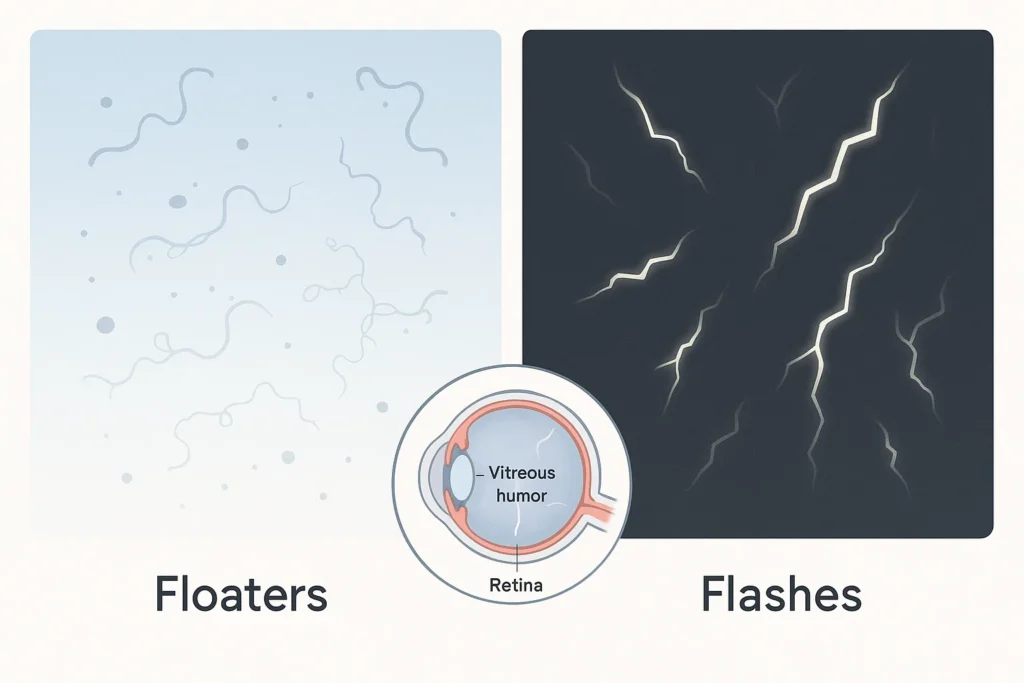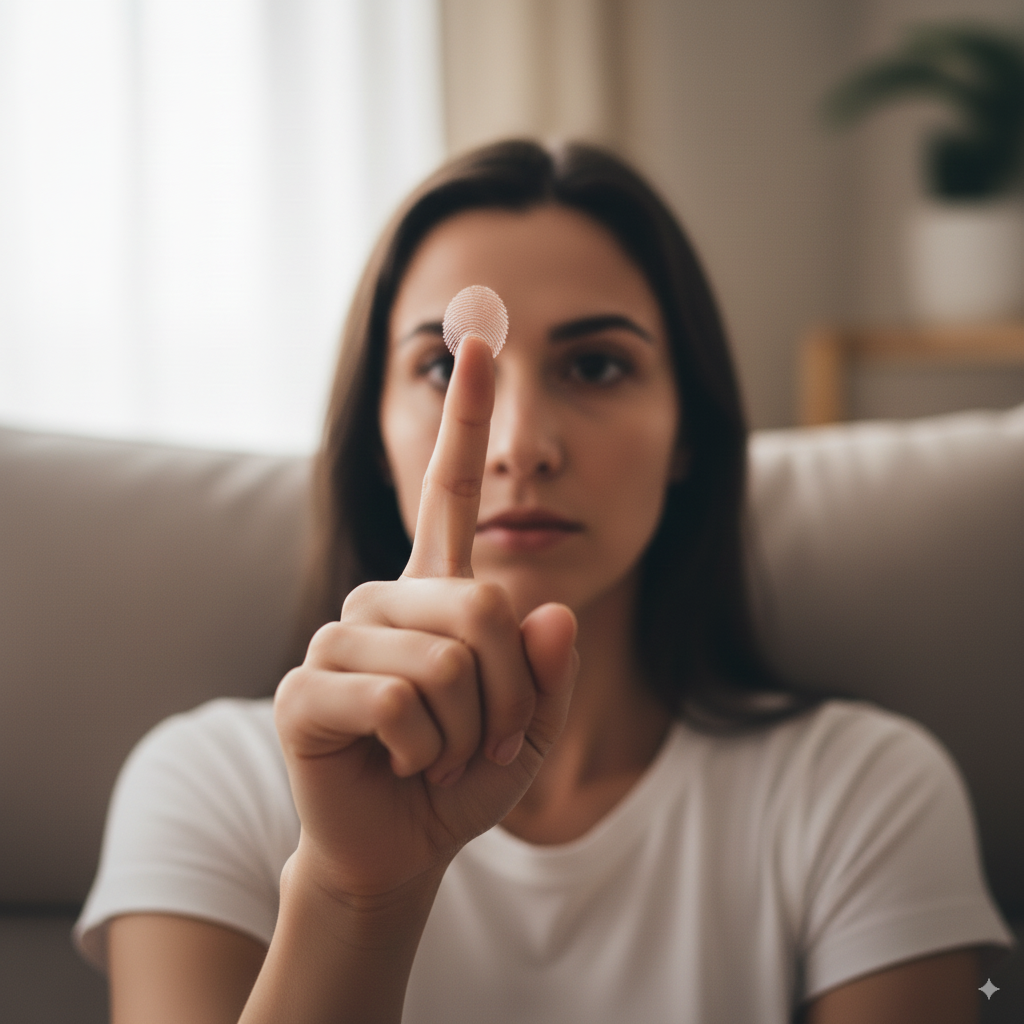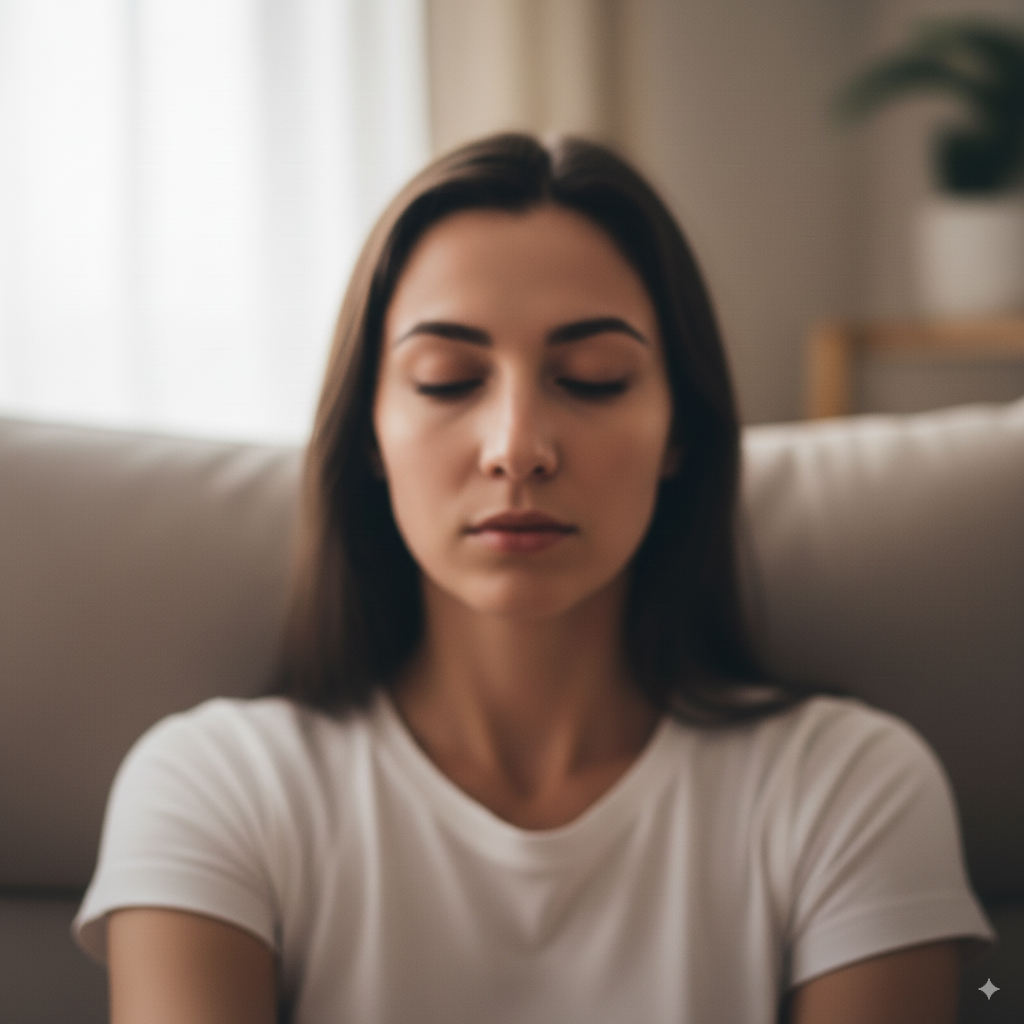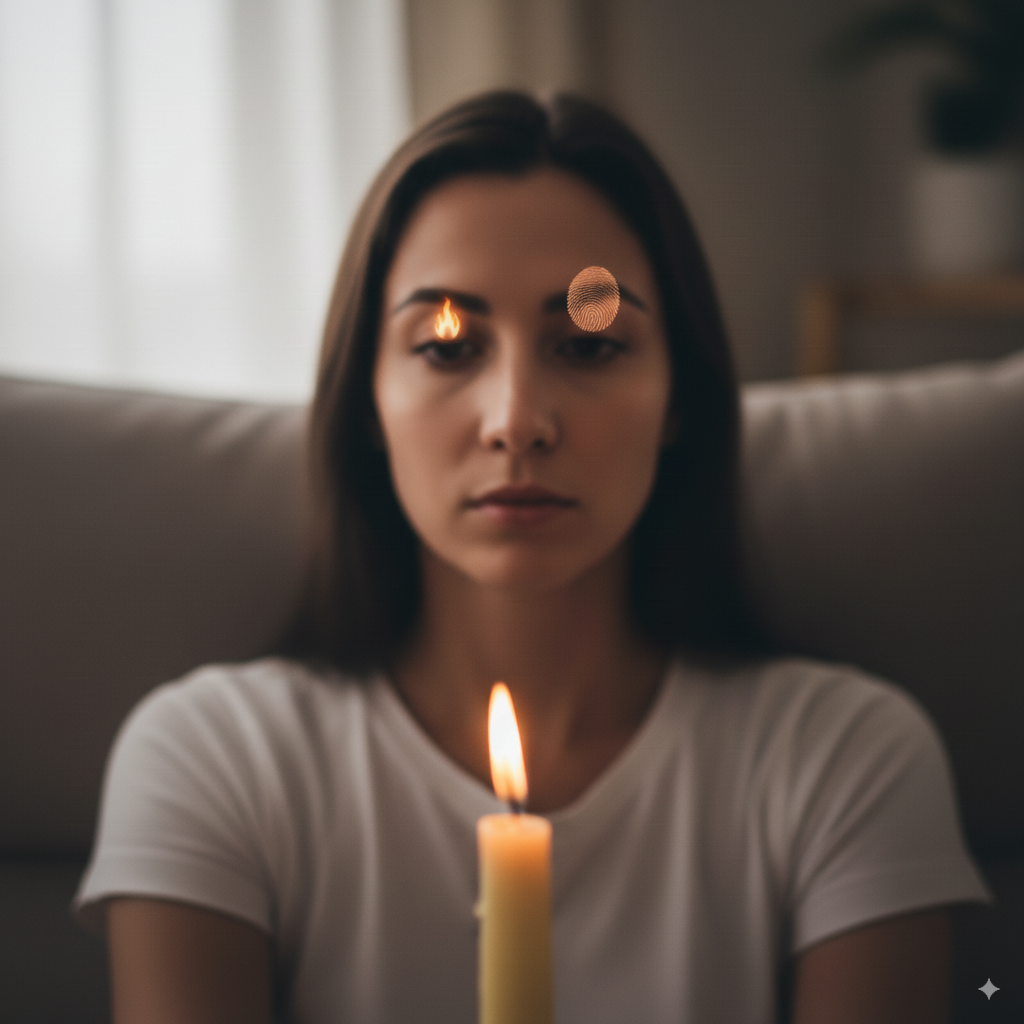Millions of people notice strange shapes, squiggly lines, or spots in their vision. These are known as eye floaters. Others sometimes see sudden flashes of light in the eye, which can be alarming. While they are usually harmless, both conditions can affect daily comfort and cause anxiety. Because of this, many people search for natural remedies for eye floaters and look for ways to reduce eye floaters naturally without relying only on medical treatment.
In this article, we’ll explore how eye exercises for floaters and flashes may help, what science says, and practical steps you can try at home.
What Are Eye Floaters and Flashes?

Eye floaters are tiny shapes — like spots, strings, or cobwebs — that drift across your field of vision. They are more noticeable when looking at a bright background, such as a clear sky or a white wall. Floaters often appear because of age-related changes in the vitreous humor, the gel-like substance inside the eye.
On the other hand, eye flashes look like brief sparks or lightning streaks in your vision. They usually happen when the vitreous gel tugs on the retina. While occasional flashes can be common, a sudden burst of them may point to a more serious issue, like retinal detachment.
Causes of Eye Floaters and Flashes
- Aging changes in the vitreous (common in people over 50)
- Posterior vitreous detachment (PVD)
- Eye injury or trauma
- Digital eye strain and floaters from prolonged screen use
- Stress and eye health connection — anxiety and fatigue may worsen the perception of floaters
While it’s important to know when to worry about floaters and flashes, most cases are mild and can be managed with home remedies for floaters in vision and lifestyle improvements.
Can Eye Exercises Really Help?
When people first notice eye floaters and flashes, the big question is — can they actually be reduced or eliminated through simple techniques? The truth is, there’s no exercise that will completely remove floaters or flashes. However, certain eye relaxation techniques and eye yoga for better vision can make a difference in how your eyes feel and how much these issues bother you.
Research suggests that eye exercises for floaters and flashes may help in several ways:
- Improve blood circulation to the retina and optic nerve
- Reduce digital eye strain and floaters caused by excessive screen time
- Support the natural healing process through better oxygen and nutrient flow
It’s important to understand that eye floaters natural treatment is mostly about management, not cure. Doing regular blinking exercises for healthy eyes or focus shifting eye exercise can ease tension and may make your vision clearer over time.
While these exercises won’t make floaters vanish overnight, many people find that combining them with foods good for eye health and lifestyle changes for better eye health leads to improvement.
Best Eye Exercises for Eye Floaters & Flashes
If you’re searching for how to get rid of floaters naturally, you should know that no single routine can completely erase them. However, adding these eye exercises for floaters and flashes to your daily routine may bring relief, reduce discomfort, and support overall vision health.
Palming Exercise (Relaxation for Eye Strain)

This is one of the simplest and most effective eye relaxation techniques.
How to do it:
- Rub your palms together until they feel warm.
- Close your eyes gently.
- Cup your palms over your eyes without pressing on them.
- Breathe deeply and relax for 1–2 minutes.
Why it works: This exercise helps relax strained eye muscles, lowers stress, and reduces the perception of eye floaters natural treatment.
Eye Rolling Exercise

Rolling the eyes improves flexibility and circulation.
How to do it:
- Sit upright and relax.
- Look up, then slowly roll your eyes clockwise in a circle.
- Repeat 5–10 times.
- Switch to counterclockwise.
Why it works: Boosts blood flow and may ease digital eye strain and floaters caused by long hours on screens.
Focus Shifting Exercise

This is a simple focus shifting eye exercise that trains your eyes to adjust quickly.
How to do it:
- Hold your finger or a pen about 10 inches away.
- Focus on it for 10 seconds.
- Then shift your focus to a distant object for another 10 seconds.
- Repeat 10–15 times.
Why it works: Helps strengthen focusing ability, reduces eye fatigue, and supports exercises to improve vision clarity.
Blinking Exercise

We blink less when using digital devices, which worsens dryness and irritation.
How to do it:
- Sit comfortably.
- Blink slowly 10 times.
- Then blink quickly for 20 seconds.
- Repeat every 1–2 hours while working on a computer.
Why it works: Keeps eyes moist, refreshes vision, and may help reduce the awareness of spots and floaters in vision.
Trataka (Candle Gazing Exercise)

A traditional eye yoga for better vision practice.
How to do it:
- Place a candle at eye level, about 3 feet away.
- Gaze at the flame without blinking as long as possible.
- Close your eyes and visualize the flame for a few seconds.
- Repeat 2–3 times.
Why it works: Improves concentration, strengthens the optic nerves, and is one of the most powerful yogic eye exercises.
⚡These exercises, along with foods good for eye health and lifestyle changes for better eye health, can become part of a holistic approach to managing floaters and flashes naturally.
Lifestyle Tips Alongside Eye Exercises
While eye exercises for floaters and flashes are helpful, they work best when combined with the right habits. Many people notice that certain daily choices — like diet, sleep, and screen usage — affect how often they see floaters and flashes. Making simple lifestyle changes for better eye health can help reduce discomfort and protect your vision long-term.
1. Follow the 20-20-20 Rule for Screen Time
Spending long hours on phones or computers increases digital eye strain and floaters. The 20-20-20 rule can help: every 20 minutes, look at something 20 feet away for at least 20 seconds. This relaxes your eyes and reduces tension.
2. Stay Hydrated
Dehydration may worsen the perception of spots and floaters in vision. Drinking enough water supports eye lubrication and overall health. Aim for 7–8 glasses daily.
3. Eat Foods Good for Eye Health
Your diet plays a huge role in natural eye care. Focus on:
- Lutein and zeaxanthin rich foods like spinach, kale, corn, and eggs
- Omega 3 supplements for vision from fish, flaxseeds, or walnuts
- Vitamins for eye floaters such as Vitamin C, Vitamin E, and Zinc
These nutrients act as antioxidants, protecting your eyes from oxidative damage and helping with natural remedies for eye floaters.
4. Manage Stress and Sleep
The stress and eye health connection is real. Anxiety and fatigue often make floaters more noticeable. Practicing meditation, yoga, or relaxation before bed can improve sleep and lower stress, helping reduce eye floaters naturally.
5. Avoid Smoking and Excessive Alcohol
Smoking damages blood vessels and reduces oxygen flow to the eyes, worsening floaters over time. Cutting down or quitting altogether supports both eye and overall health.
When to See a Doctor for Floaters & Flashes
Most people with eye floaters and flashes don’t need urgent treatment, especially if symptoms are mild and stable. However, there are certain cases when these vision changes can signal something more serious. Knowing when to worry about floaters and flashes is important for protecting your eyesight.
⚠️ Warning Signs You Shouldn’t Ignore
Seek medical help immediately if you notice:
- A sudden increase in floaters that weren’t there before
- Bright flashing lights in the eye, especially in one eye
- A shadow or curtain-like effect moving across your vision
- Sudden blurry vision with floaters
- Loss of side (peripheral) vision
These could be symptoms of retinal detachment, a serious condition that requires urgent treatment to prevent permanent vision loss.
Common Eye Conditions Linked to Floaters & Flashes
- Posterior vitreous detachment (PVD): Common with aging and usually harmless.
- Retinal tear or detachment: Needs immediate attention.
- Eye injury or trauma: Can trigger floaters or flashes.
- Migraine aura: Sometimes mistaken for flashes of light.
Why Professional Eye Exams Matter
Even if your floaters and flashes are mild, regular eye checkups are essential. An eye doctor can perform tests to check for retinal problems, measure eye pressure, and ensure there’s no hidden damage.
👉 While eye exercises, home remedies for floaters in vision, and natural remedies for eye floaters may help in mild cases, never ignore sudden or severe changes. Early detection is key to protecting long-term eye health.
Final Thoughts — Do Exercises Work for Eye Floaters?
Floaters and flashes are common, especially as we age, and while they can be annoying, they are not always dangerous. Doing simple eye exercises for floaters and flashes like palming, blinking, and focus-shifting can improve circulation, ease strain, and support overall eye comfort. Combined with foods good for eye health, lutein and zeaxanthin rich foods, and omega 3 supplements for vision, these practices may reduce the discomfort of floaters naturally.
That said, it’s important to remember: exercises and home remedies for floaters in vision may help you manage symptoms, but they won’t make floaters disappear completely. If you experience sudden changes, always seek medical advice to rule out conditions like retinal detachment.
A holistic approach — eye exercises, lifestyle changes for better eye health, proper diet, hydration, and stress management — gives the best chance of reducing floaters and flashes naturally.
FAQ — People Also Ask
Q1: Can eye exercises get rid of floaters?
No, eye exercises cannot remove floaters, but they can improve blood flow and reduce strain, making floaters less noticeable.
Q2: Do flashes in vision go away on their own?
Occasional flashes may settle with time, but frequent or sudden flashing lights in the eye should be checked by a doctor to rule out retinal issues.
Q3: Which foods help with eye floaters naturally?
Lutein and zeaxanthin rich foods (spinach, kale, corn), omega 3 supplements for vision, citrus fruits, and nuts are all supportive for eye health.
Q4: Are eye floaters and flashes dangerous?
Most are harmless, but a sudden increase in floaters and flashes can be a warning sign of retinal detachment and needs urgent medical attention.
Q5: What are the best home remedies for floaters in vision?
Good hydration, eye relaxation techniques, blinking exercises for healthy eyes, stress reduction, and a nutrient-rich diet are natural ways to manage floaters.


